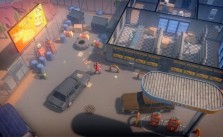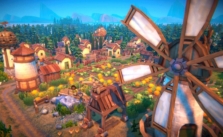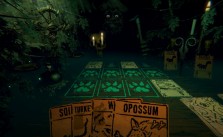Timberborn: Tips and Tricks – Beginner’s Guide
Timberborn is a simulation game that combines city-building and survival, released in September 2021 by Mechnaistry. The game provides a single-player experience with high-quality graphics in a post-apocalyptic world. Players must construct and manage their own colony, selecting a faction and working to ensure the survival of its inhabitants.
Enter the post-apocalyptic world of survivors known for their expertise in agriculture and dam construction. This guide covers the basics of the game and provides assistance for beginners.
Resources:
Success in Timberborn requires familiarity with the available resources in the game. The primary resources are:
Stored Water: Stored water refers to the amount stored in towers throughout the town. Monitoring the storage towers is crucial for survival.
Logs: Logs are used for building structures and crafting equipment.
Food: Food is essential for keeping the Beavers alive and can be obtained by growing crops or from other sources.
Goods: A range of items that can be manufactured or stored.
A Guide to Beavers
The Beavers, an in-game creature, are likely already familiar to you. This section provides information about the Beavers and some interesting facts. The total population consists of 364 individuals: 24 children and 240 adults, separated from the rest of the population. Children mature as they reach the appropriate age.
How to Increase the Number of Beavers
The first step is to ensure that you have enough wood and storage space. Beavers also need access to food and water for optimal happiness while constructing their city for survival. When you click on the beavers, you will see bars on the side that indicate their level of happiness. To get more beavers, you must keep them happy.
After completing the first step, you need to build a hut. A simple hut is sufficient as it can house three beavers at once: a female, male, and baby. However, it is important to note that overpopulation may result. Beavers will not reproduce if they sleep outside, leading to a stagnant population. This may be intentional at times. Having many huts may result in a high number of baby beavers.
Hidden Resources
There are Hidden Resources in Timberborn that are not immediately visible.
Land – It is divided into two categories: Non-arable and Arable.
Arable – This type of land is usually green due to the nearby water flow. The distance to arable land can vary depending on water source, terrain height, and other factors.
Non-arable – This type of land can also be converted into a Field through various methods. Usually, lands that are not suitable for agriculture are used for building houses and industrial areas.
Water Dump
Water is crucial in Timberborn. Poor water management can lead to the loss of Beavers. The Timberborn Water Dump can be unlocked by gaining Science points through an Inventor, a small structure that only accommodates one Beaver. Each time this Beaver completes a task in the Inventor, it generates 3 Science points that can be used to unlock new building pieces. With 250 Science points, you can unlock the Water Dump in the “Water” category.
Dammed water or Dynamite blasting can be challenging, but the Timberborn Water Dump is a much easier option.
It’s also worth noting that if you play as the Folktails faction, you can unlock their unique Irrigation Tower for 200 science, which waters the land in a large circle around it without the need for depression or levies.
Learn how to use Explosives
Using Timberborn Explosives is the easy part; the hard part is actually unlocking them. Once that’s done, it’s simply a matter of producing enough Paper to crank out as many as you need. Build Dynamite above a piece of terrain you want to destroy. After that, click the Dynamite and press the button to destroy the tile. For 400 Science, unlock the Explosives Factory (under Landscaping). Build an Explosives Factory, connect it to your Power Network, and start manufacturing Dynamite.
We hope you found this guide helpful. If you have any other tips or tricks to contribute to this guide, please leave a comment. We’ll update this guide as soon as your comment is approved.















